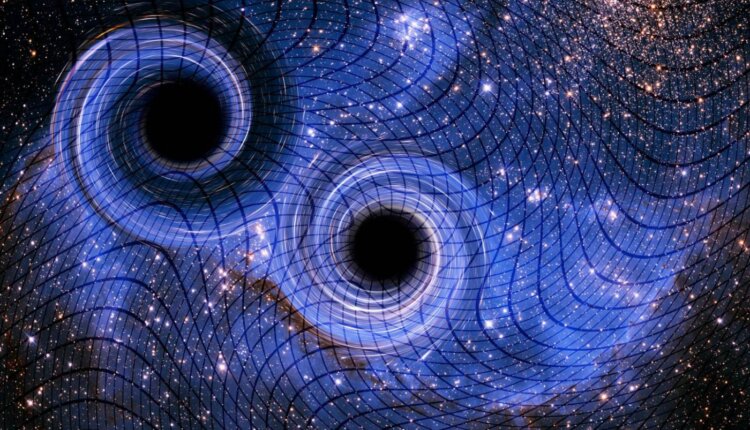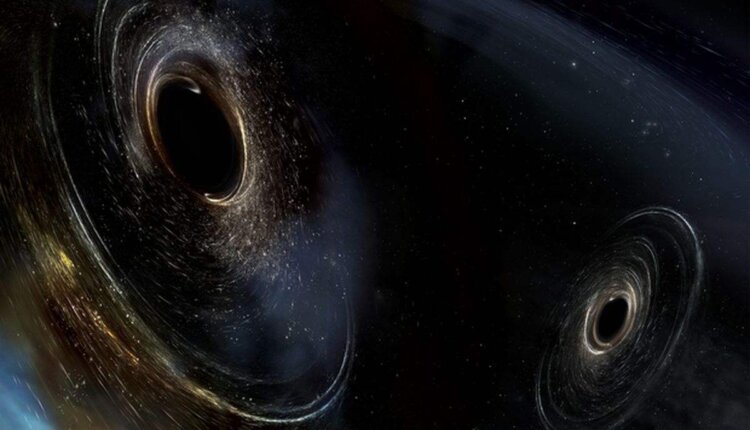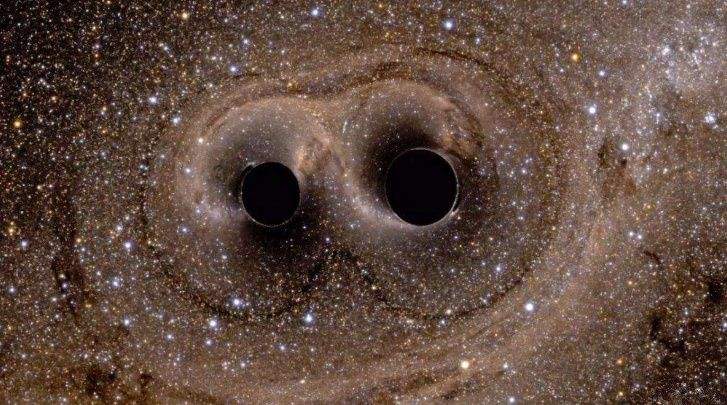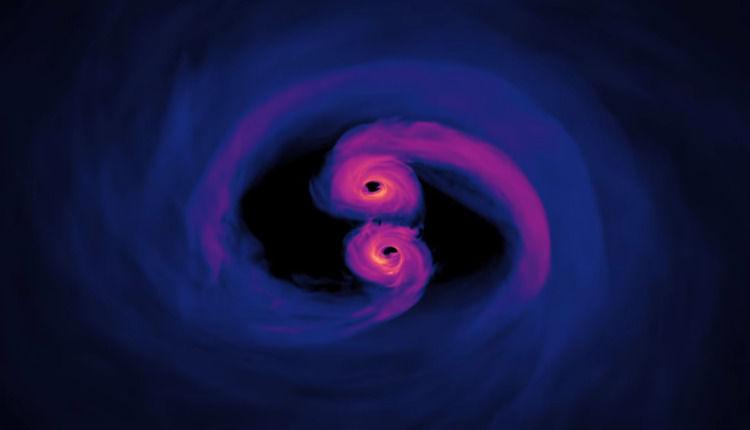Such an event does not happen every year: data from the galaxy SDSS J1430+2303 indicate that possibly 2 supermassive black holes collide at its center is possible, But there are still some uncertainties.
The two black holes, which are about a billion light-years away, together weigh as much as 200 million suns. According to researchers, a collision could happen in the next 3 years. Until then, one must continue to observe the galaxy.
Measuring devices not designed for black holes collide collision
The black holes collide was detected in 2015, since then black holes collide observations have been limited to black holes with simple stellar mass. This is not surprising, since the gravitational wave detectors LIGO and Viro, which can detect such events, are aimed at these masses.
However, supermassive black holes can reach millions to billions of times the mass of our sun . The gravitational waves produced when they collide have a frequency that is too low to be detected by the detectors used today.
Supermassive black holes are a mystery
But the researchers expect that the collision will also be noticeable with the help of the gravitational wave detectors. In the event of a collision, all possible radiation would be released. This can be recorded on Earth and shed light on why such supermassive black holes exist in the first place. So far it is still not clear why they can become so heavy.

The center of SDSS J1430+2303 has been observed for years and always recurring oscillations are recorded from it. This data suggests 2 very heavy celestial bodies orbiting each other. While 3 years ago they orbited each other in one year, now they only need one month.
for one orbit. Data very difficult to interpret
However, it is not clear whether these are supermassive black holes, because data from galaxy centers are very difficult to interpret. X-ray measurements underline the researchers’ thesis – but there is no 100 percent certainty.
It is certain, however, that J1430+2303 takes place in the center of SDSS, which has not been seen before. The coming years will provide more details about black holes collide.
How are they created? What is hidden inside? Science has been looking for answers to these questions for decades. Now researchers have been able to observe something that has never been observed by a human being before: black holes collide, whose collision was so violent that an unexpected energy was released in space.
“It is the biggest bang since the Big Bang that humanity has ever observed,” Alan Weinstein, astronomer at the California Institute of Technology, explains to the US magazine Popular Science. He was part of the team that discovered the black holes collide. The scientist hopes to find clues through his discovery as to why the universe looks, as it looks.

Fusion of two black holes
The collision of the black holes occurred about seven billion light years away from Earth. The two massive celestial objects merged into a new black hole after black holes collide. The energy released in the process was so enormous that it caused a disturbance in the cosmos.
This is the first sighting of a medium-sized black hole created by a merger. It is 142 times the size of the sun. The results of the discovery have been published in the Physical Review Journals.
The fusion signal of the collision lasted only one tenth of a second
The effects of the collision can also be detected here on Earth. Because: The space-time continuum expanded through the released energy, collapsed and vibrated, creating gravitational waves that formed our home planet on the 21st. May 2019 measurably reached. There is no photo of this newly created black hole*.
For this purpose, the researchers were able to determine the noise. The signal called “GW190521” lasted only one tenth of a second and came unexpectedly for the researchers in this way. It was not until 2015 that a similar signal of the black holes collide was measured. However, compared to its sound, which resembled a deep chirping, the new noise was higher.

Two black holes unite to form a gigantic black hole
Also new for the scientists was that the heavier of the two colliding black holes was in the so-called “paarine stability” and still had a mass of 85 suns. However, according to Alan Weinstein, a star that collapses should not be able to create a black hole in the range of 65 to 120 solar masses.
The reason for this is that “the most massive stars are wiped out by the supernova that comes with the collapse.” Nevertheless, the astronomer has a possible explanation for the phenomenon, which is related to the theory of so-called hierarchical fusions. After that, light black holes first merge with the star mass.
“They consolidate until they become gigantic black holes,” says Alan Weinstein, who looks forward to future observations euphorically: “We have to look for more exotic events like this. And after exotic events like we have never seen before.

